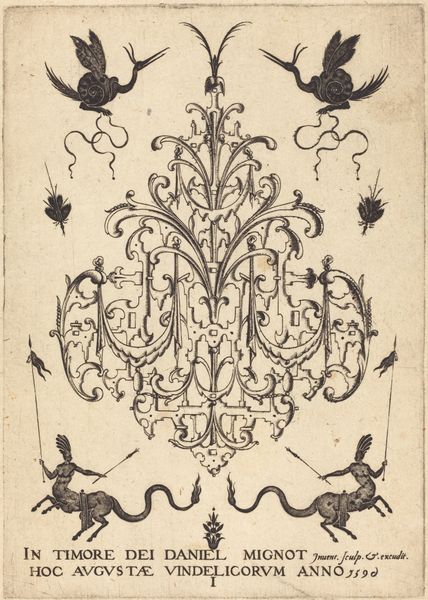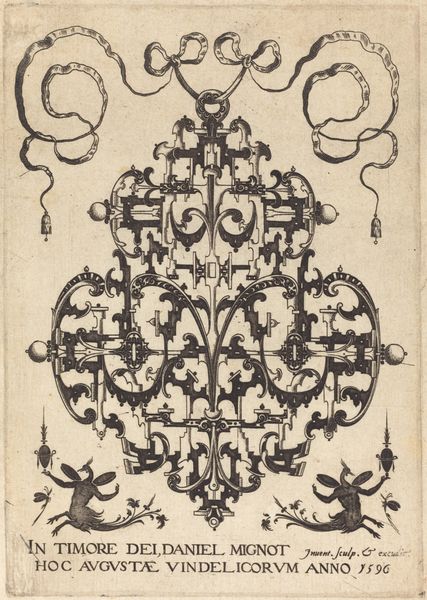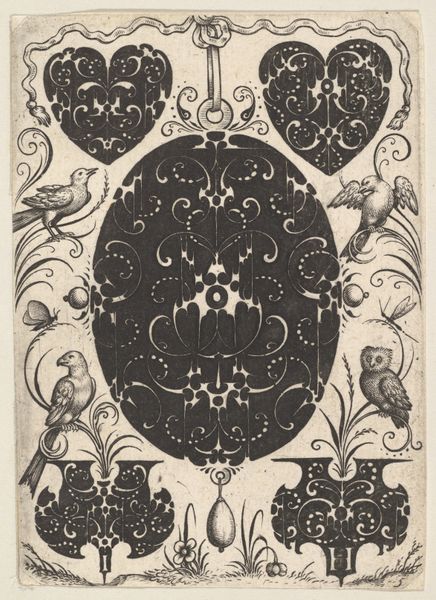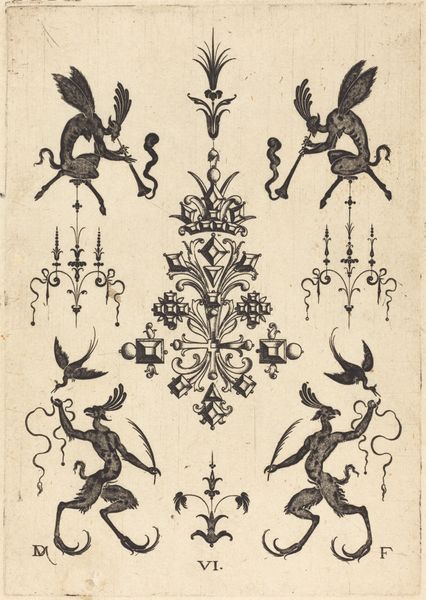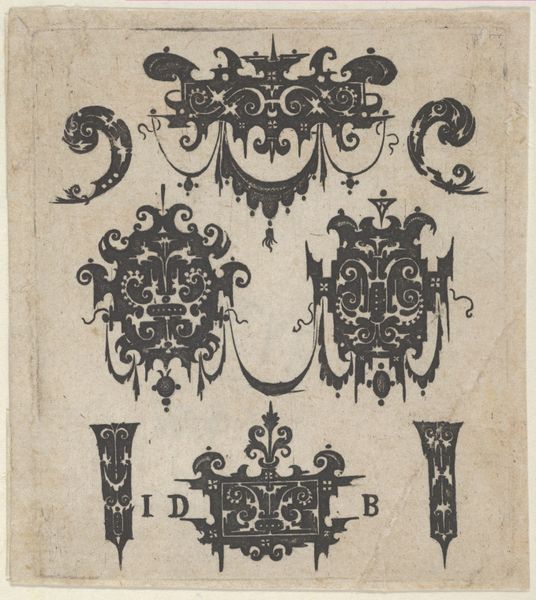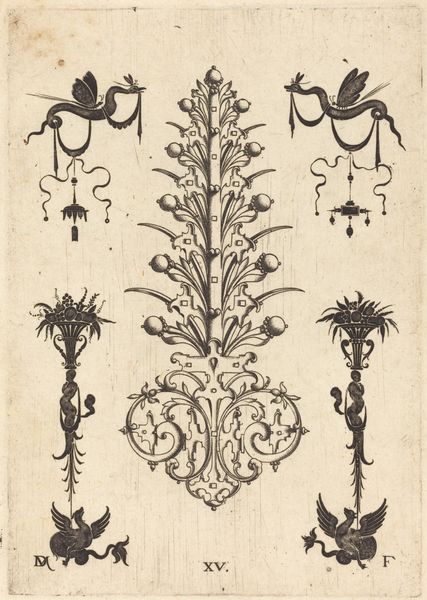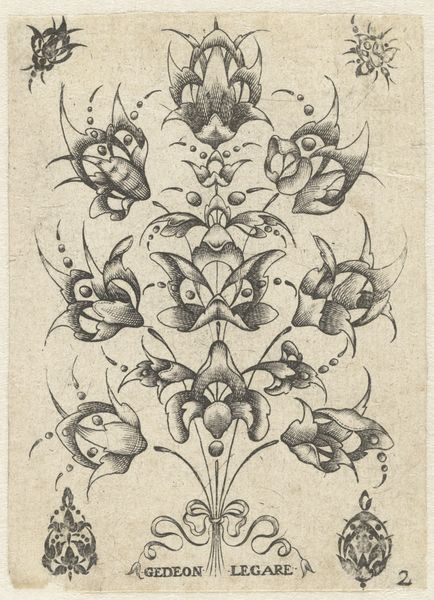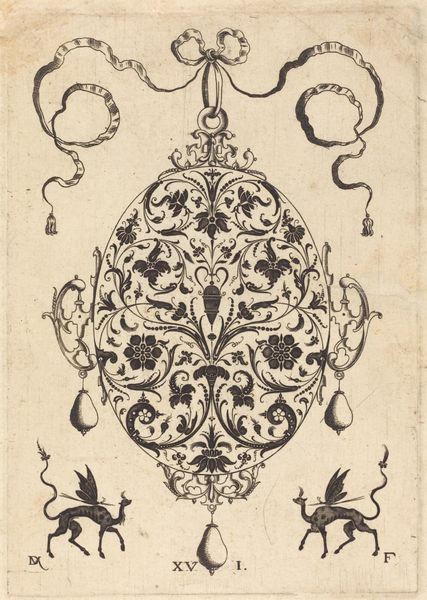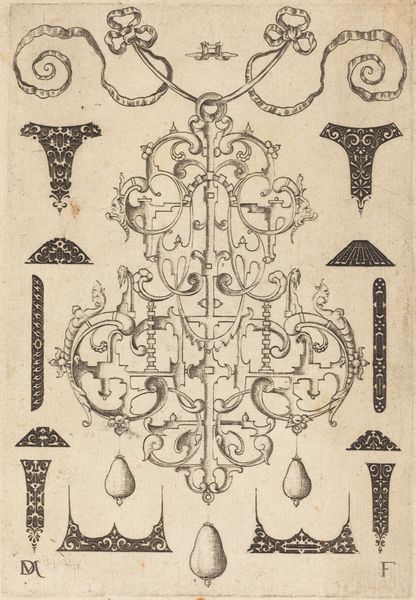
Brooch with Sprigs at Top and Griffins with Trophies at Bottom 1596
0:00
0:00
print, engraving
# print
#
old engraving style
#
mannerism
#
figuration
#
line
#
engraving
Copyright: National Gallery of Art: CC0 1.0
Editor: This engraving, “Brooch with Sprigs at Top and Griffins with Trophies at Bottom” by Daniel Mignot, dates from 1596. The overall effect is one of ornate decoration, but there's something a bit unsettling about those griffin figures. What do you see in this piece? Curator: You're right, there is tension here. Consider the historical context. Mannerism, the style Mignot employs, emerged during a period of religious and political upheaval. It deliberately broke away from the High Renaissance's emphasis on harmony and naturalism. How does this print reflect that break? Editor: Well, the composition feels busy, not as balanced. The griffins seem almost grotesque, and they're placed asymmetrically. Is that intentional? Curator: Precisely. Mannerist artists often sought to express a sense of unease and sophistication through artifice and exaggeration. Ornament became a way of displaying status, think of elaborate courtly dress and rituals. Also, these prints were disseminated as models for artisans. Mignot wasn’t just making art; he was shaping taste and craft production. Editor: So, the function of art extends into the world of commerce? Curator: Absolutely. The "politics of imagery" are always in play. Dissemination of prints allowed new artistic conventions to appear far from artistic centers, influencing social, cultural and manufacturing contexts. This image became both an object of aesthetic contemplation and a template for societal consumption. Editor: That's fascinating. I hadn't considered how something like a brooch design could be part of broader social and historical trends. Thanks for illuminating the context behind what I initially just perceived as decorative. Curator: And thanks to you. Considering how artworks affect and are affected by social structure is critical to truly seeing art and history.
Comments
No comments
Be the first to comment and join the conversation on the ultimate creative platform.
